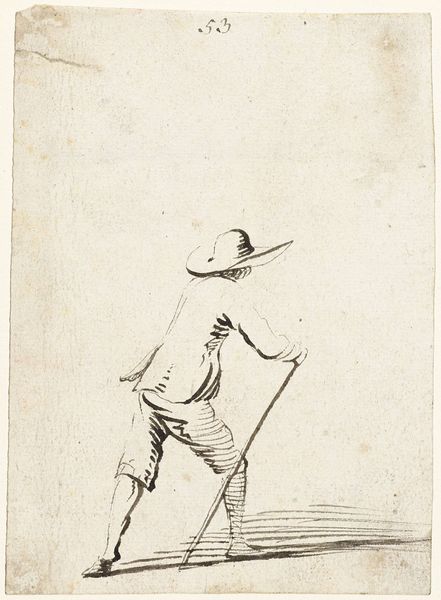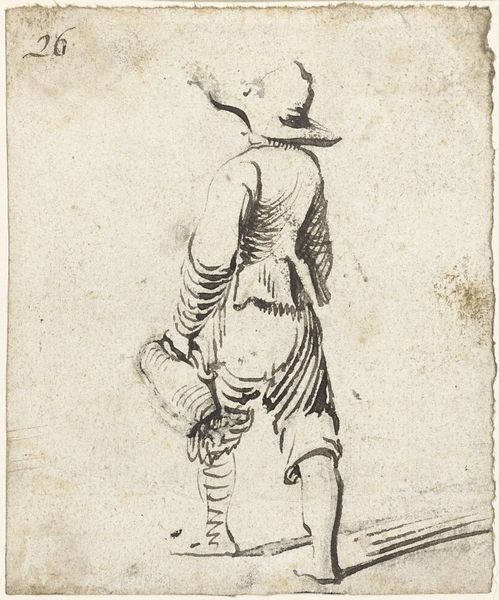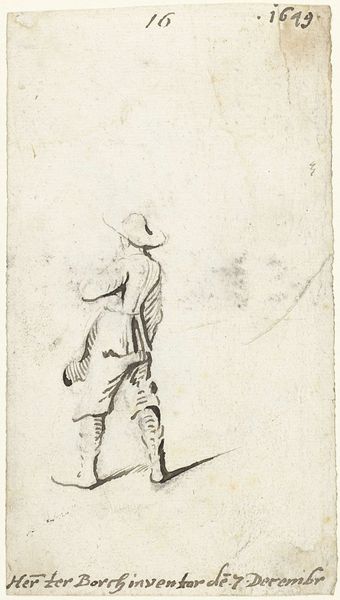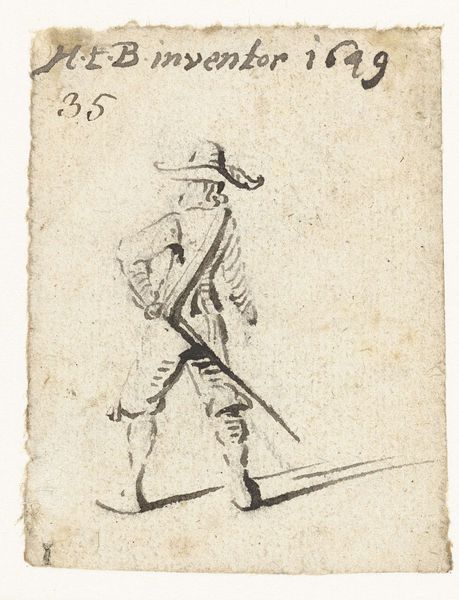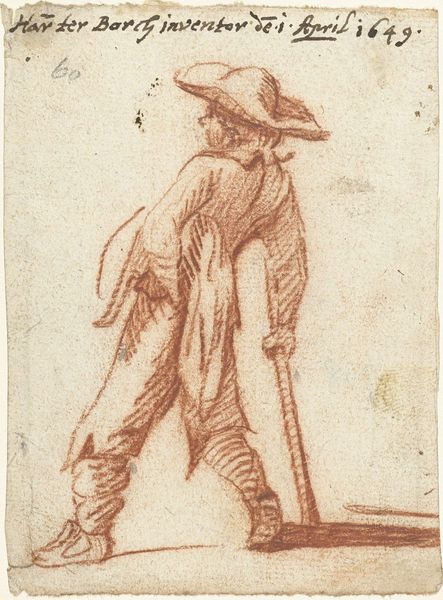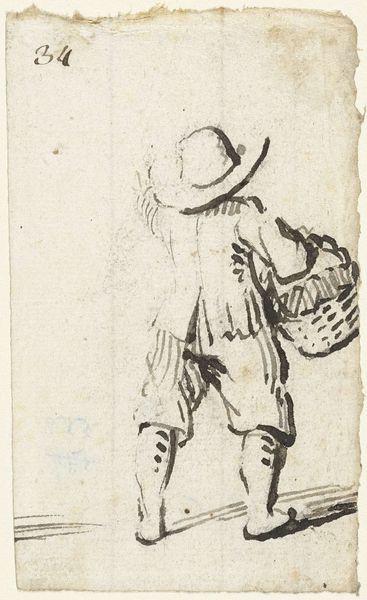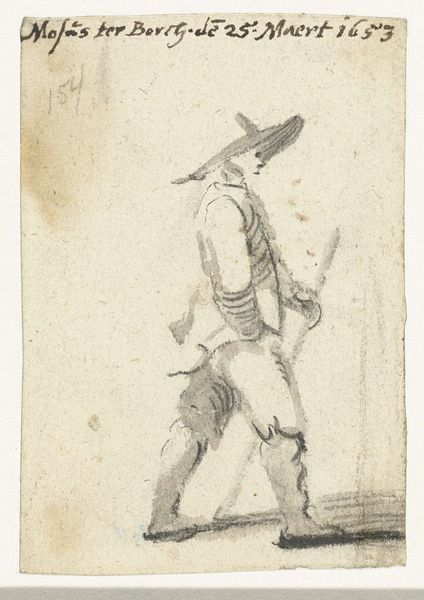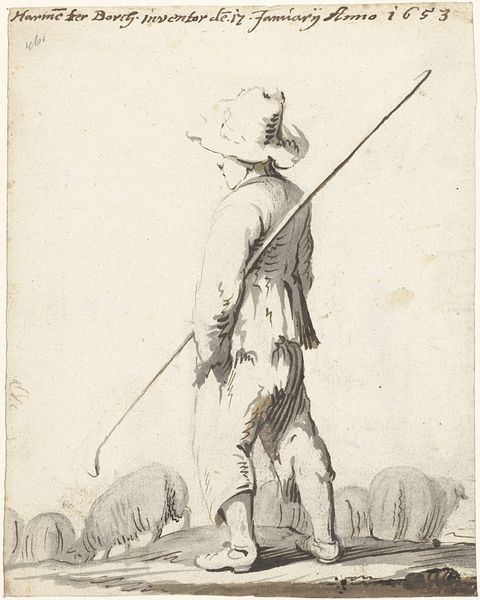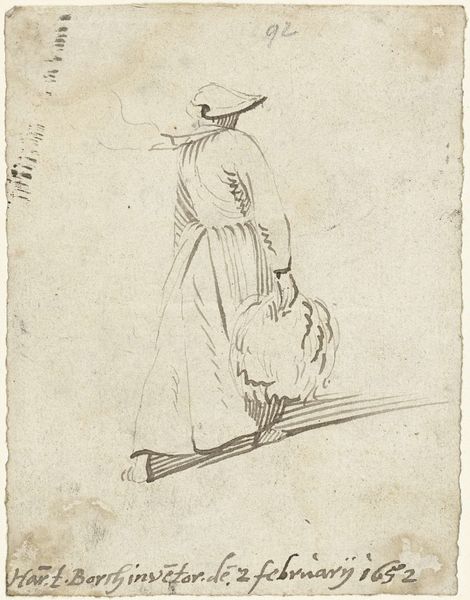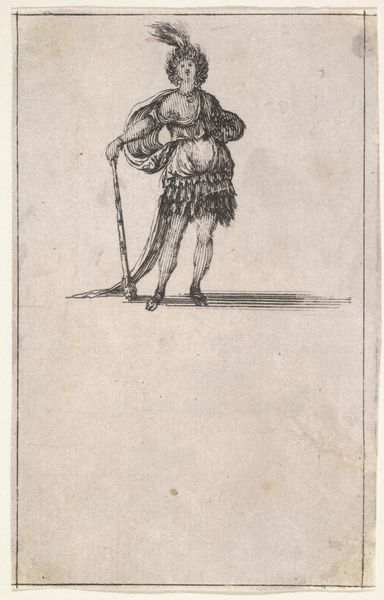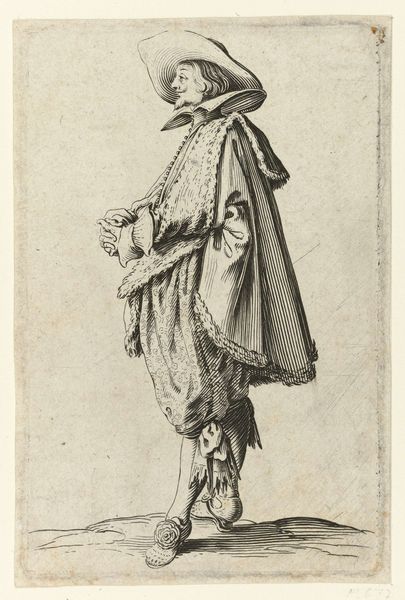
drawing, ink
#
portrait
#
drawing
#
dutch-golden-age
#
figuration
#
ink
#
pen-ink sketch
#
genre-painting
Dimensions: height 82 mm, width 69 mm
Copyright: Rijks Museum: Open Domain
Editor: Here we have Harmen ter Borch's "Man Walking, Leaning on a Stick, to the Right," likely from 1651. It’s an ink drawing, and I'm immediately struck by how… ordinary it seems. He looks like someone going about their day. What do you see in this piece? Curator: Beyond the surface simplicity, this drawing offers a window into 17th-century Dutch society. Ter Borch wasn't just capturing an individual; he was reflecting a broader social dynamic. Who was this man? What was his social class? His posture, his clothes – even the stick – speak volumes about societal hierarchies and the everyday struggles of ordinary people in the Dutch Golden Age. Editor: So you think this drawing is a kind of social commentary? Curator: Absolutely! Think about the context: The Dutch Republic was undergoing massive economic and social changes. Art wasn't just about portraying the wealthy; it was increasingly about depicting the lives of everyday people. What does it mean that ter Borch chose this particular subject, depicting someone leaning on a stick? Perhaps hinting at vulnerability or social dependency at a time of widespread expansion. Can this be viewed as a critique of growing economic disparities, revealing the darker side of the Golden Age's glittering surface? Editor: That's a compelling way to look at it! I hadn't considered how it might reflect the era's social anxieties. Curator: Art doesn't exist in a vacuum. It's a product of its time, shaped by political, economic, and social forces. Understanding those forces allows us to see art as more than just aesthetics – but as a form of cultural resistance, perhaps? Editor: I’ll definitely carry that in mind going forward. Thank you! Curator: Likewise. The past helps make better sense of our present and it will inform how to agitate for a better future.
Comments
No comments
Be the first to comment and join the conversation on the ultimate creative platform.
